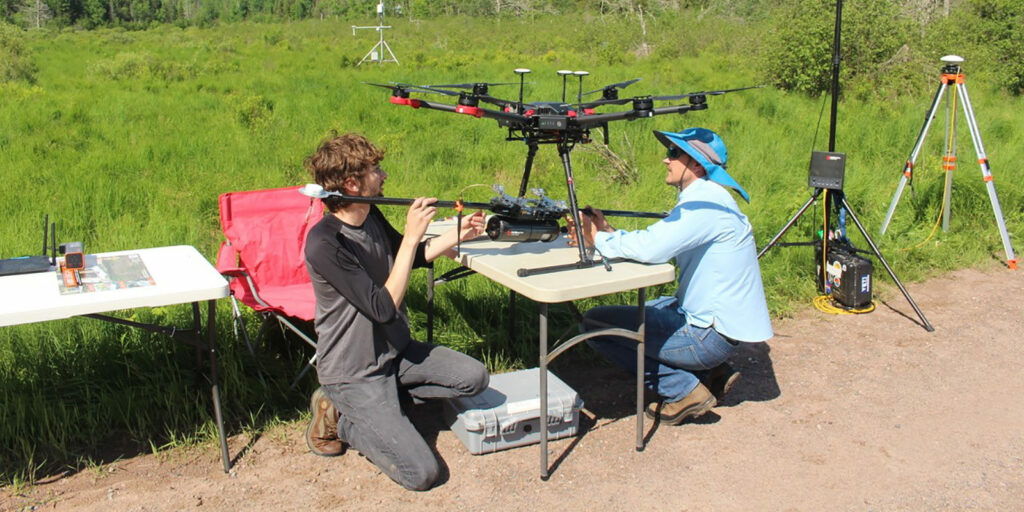Assistant professor of geography will measure the impact of climate change on carbon emissions from Arctic wetlands.
by Elise T. Mahon | April 20, 2023
(Originally published by UW-Madison College of Letters & Science News)

When Christian Andresen was just an undergraduate, he had the opportunity to travel to northern Alaska to conduct field research in the Arctic. The trip changed the trajectory of his academic career and he’s continued conducting field research there for the past 15 years. Now, thanks to funding from an NSF Career award, he can help pass along this passion by training the next generation of scientists and geographers to study arctic processes and patterns.

Andresen, an assistant professor of Earth system geography in the College of Letters and Sciences, is using cutting-edge technologies like drones, gas-monitoring systems and virtual reality to measure and visualize the effects of climate change on carbon emissions from arctic wetland ponds and the potential feedbacks to global climate.
As the climate warms, the ice season in the Arctic shortens and more permafrost thaws, releasing more nutrients into the ecosystem than before. The combination of warmer temperatures, longer growing seasons and more nutrients allows for the increased growth of aquatic grasses along the edges of these arctic ponds.
Unfortunately, the grasses that are thriving in this warmer environment are also acting as what Andresen describes as “methane straws”. The hollow inner structures of the aquatic grasses keep them afloat in the ponds, but it also allows the grass to funnel methane, a potent greenhouse gas, from the soil below into the atmosphere.
“Even though these ponds and wetlands only cover about ten percent of the landscape in the Arctic, they account for about two-thirds of the methane emissions,” Andresen says. “So, you have this ten percent of the landscape that act as methane hotspots.”
Since methane is 30 times stronger a greenhouse gas than carbon dioxide, it’s important to understand just how much methane these plants and ponds are funneling into the atmosphere. Understanding these dynamics will allow them to eventually use the data to improve global climate models.
Over the next five years, Andresen will use the funds from the award to continue this research with students and develop several modes of education and outreach about Earth geography research in the Arctic. One of the main motivations behind the project is to diversify the field by providing pathways to research for undergraduates from minority communities through an initiative called “Polar Badgers”.
“If we don’t involve minorities at that stage, we’re not letting this big part of the US population make science questions,” Andresen said. “We’re talking about how society will confront and act on climate change and environmental justice; we’re talking about inclusion. This program aims to pull those communities into Arctic research and train the future US demographics to design and conduct science that will provide more diverse research.”

Undergraduates in the Polar Badgers group will travel to Alaska, design their own experiments, collect and analyze their own data and present their findings to local symposiums and national conferences. They’ll also be trained to use novel technologies like drones, Artificial Intelligence, photogrammetry software and remote sensing methods like LIDAR, which Andresen believes represent the future of science.
“For me, getting involved in Arctic science as an undergrad — especially with field activities — it was a life changing moment that would dictate my path into arctic research,” he says. “I wouldn’t be here if it wasn’t for those opportunities. So, I want to continue that and develop this research program of Polar Badgers to continue these opportunities for minorities.”
Students in the geography department will also help design a photo book that highlights the Arctic landscape, Indigenous communities in the region and the threats of climate change they face. Another important aspect of the project will include outreach to Indigenous groups in Alaska through summer camp activities so students can share their research and get feedback from Native groups living with the realities of these climate changes every day.



